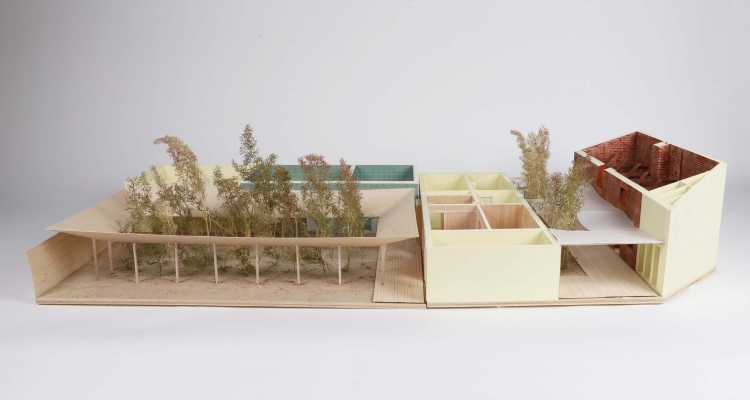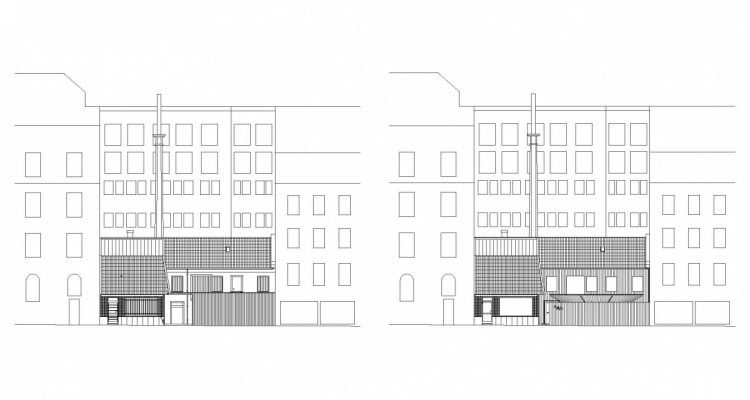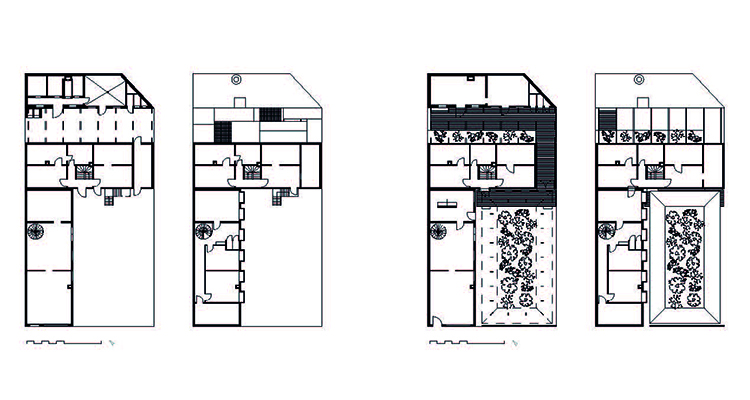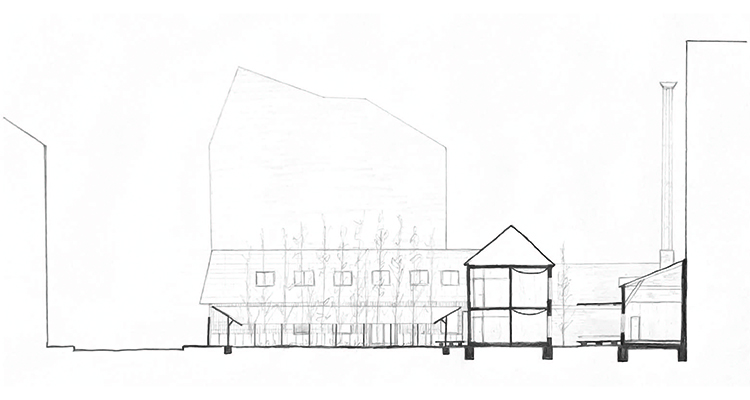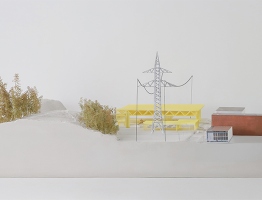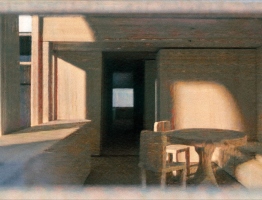Diplomprosjekt
Høst 2024
Institutt for arkitektur
This work investigates how architectural design can contribute to creating a supportive and dignified environment for women in addiction. While total rehabilitation may be the goal for some, many women live with long-term addiction, requiring spaces that meet them where they are—at their most vulnerable, often without income or stable housing. Low-threshold centres differ from institutional treatment facilities in both function and perception. The architecture of such centres must counteract the negative connotations associated with institutional care, which often exacerbate feelings of distrust among women who feel abandoned by the system.
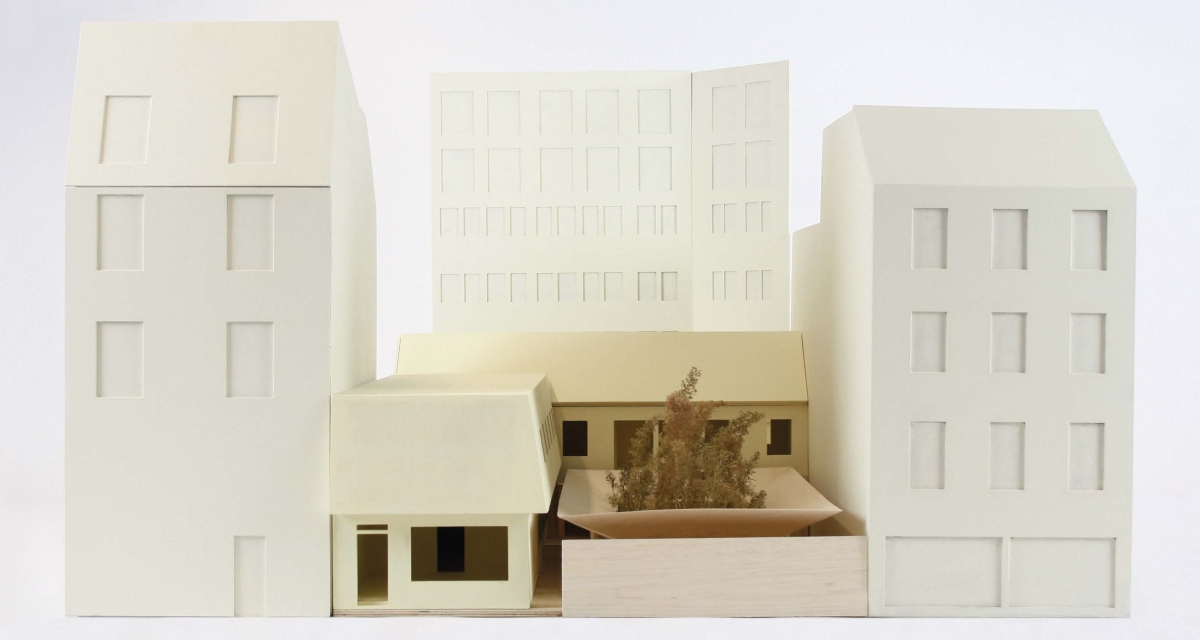
The site is located in the historic Hausmannskvartalene where the existing complex was built from 1863 to 1969. Early history is kept with the structuring of these three buildings and today the complex is used as storage space serving the neighbouring warehouse Oslo Sportslager.
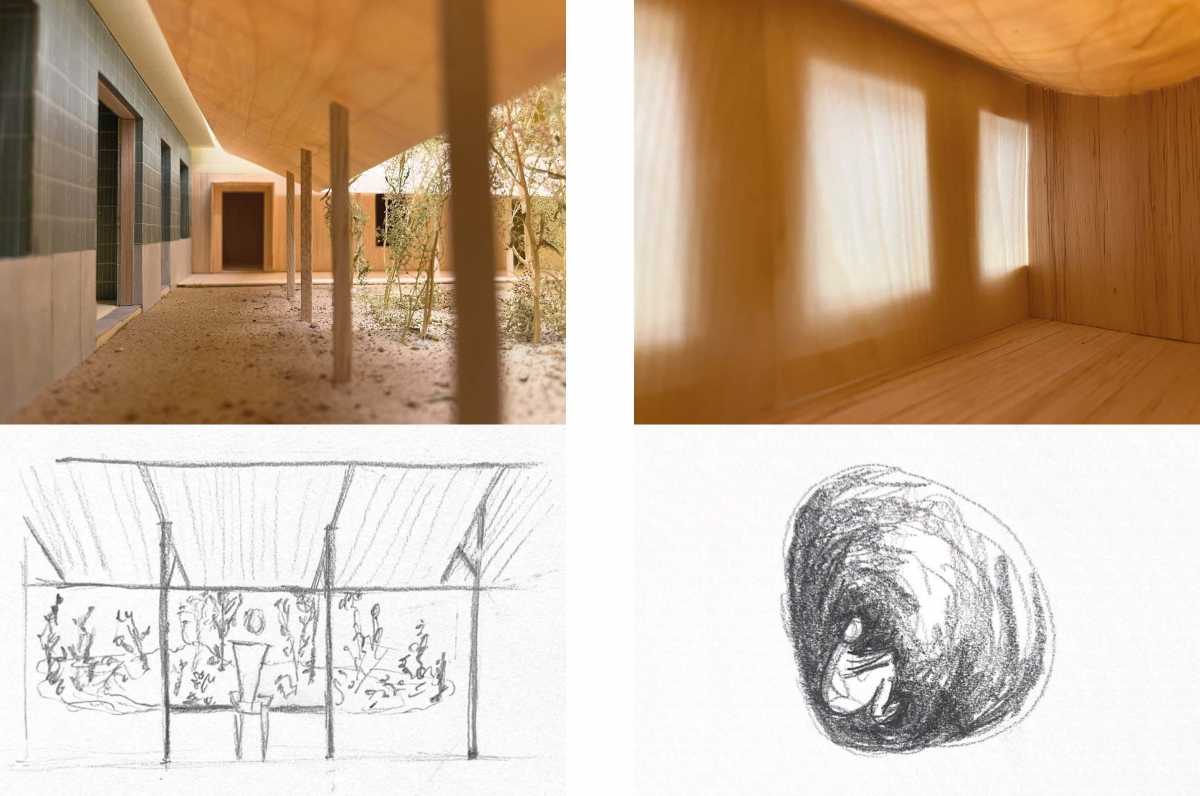
The role of architecture in maintaining dignity is central to this project. By designing spaces that promote comfort, safety, and a sense of belonging, architecture can offer choices and support the self-determination of individuals who face significant isolation. The transitions between spaces—such as light, sound, temperature, and material shifts—can be particularly challenging for those with addiction, as they often have heightened sensitivities. Thus, careful attention to these transitions is crucial in creating a therapeutic environment.

Ida Aurora Nergaard / idaauroranergaard@hotmail.com
